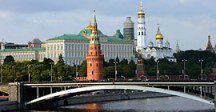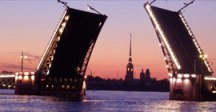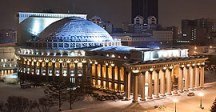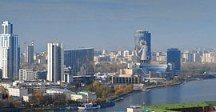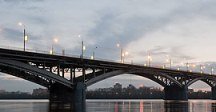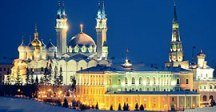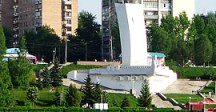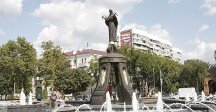Map of Smolensk
Detailed interactive map of Smolensk. Map of Smolensk with streets and numbers of houses. Satellite map of Smolensk with sights of the city.
The change between the satellite map of Smolensk and the schematic one is made in the lower left corner of the interactive map.
Smolensk
The population of Smolensk: 320,170 people (2021)
The telephone code of the city of Smolensk: +7 4812
The automobile code of the city of Smolensk: 67
Date of foundation of Smolensk: 863
Postal code of the city of Smolensk: 214xxx
Smolensk is a Russian city whose population has already reached 320 thousand. In 1985, he was awarded the title of Hero city for his services in the Second World War. Of all the cities, it is one of the oldest, since already in the 9th century it was a settlement of the Krivichi tribe. Architectural and historical monuments, various antiquities, sights – all this makes the city fabulous, makes it a magnet for tourists.
The main attraction of Smolensk is the fortress wall. It began to be built by order of Ivan the Terrible in the 16th century. 6 km is its length, and the number of towers is 38. Many park areas of Smolensk are more than one hundred years old. For example, the park "Blonye" near the fortress wall. It was established in 1830.
What to see in Smolensk
The museum "In the World of Fairy Tales" on Lenin Street is designed specifically for children. Inside the museum, scenes from Russian folk tales and stories by Alexander Pushkin are recreated. Children can even come face to face with Baba Yaga and the Goblin. The exhibition also features children's works inspired by a visit to the museum.
The Museum of the History of Smolensk is the oldest museum in the city and dates back to 1888, when an archaeological museum was established in the building of the City Duma. Today, the museum tells in detail about the history of the city, which dates back more than 1,000 years. The Museum of Nature and Ecology is located in the same building.
The Church of the Resurrection of Christ was built in 1765 at the expense of a local merchant. The Baroque church is a cubic structure with two levels of windows and is topped by a single dome.
The Sergei Konekov Sculpture Museum on Mayakovsky Street is dedicated to the work of the famous sculptor, who was born in 1874 in the Smolensk province and subsequently received the Lenin and Stalin Prizes. Many of his sculptures are made of wood.
The Smolensk Art Gallery on Kommunisticheskaya Street is located in a beautiful building built in 1905. The gallery's collection is based on works of Russian art by some of the greatest Russian artists. The exhibition also features ancient Russian icons of the Moscow, Pskov and Novgorod schools and wooden sculptures of the 15th and 18th centuries.
The monument to Vladimir Kurylenko at the intersection of Kommunisticheskaya Street and Mayakovsky Street is dedicated to Vladimir Kurylenko, who was a member of a partisan sabotage unit operating in the occupied Smolensk region during World War II. He was awarded the title of Hero of the Soviet Union.
The monument to Lenin in Smolensk stands on Lenin Square and is complemented by the beautiful House of Soviets, behind which the regional administration is now located. The statue was unveiled in 1967 and reaches a total of nine meters in height.
The Ascension Convent on Konenkova Street was founded in the 1630s and is dedicated to the Ascension of Christ. In 1665, the monastery was transformed into a convent. The main cathedral of the monastery is the great Ascension Cathedral, which was built between 1693 and 1704 by order of Tsar Peter the Great, who decided to replace the old wooden churches of the monastery.
There is a monument on Victory Square depicting the poet Alexander Tvardovsky sitting on a bench and talking with his most famous character Vasily Terkin. The poem, in which Vasily Terkin is depicted as a soldier of the Second World War, was published and became popular during the war. The monument was opened in 1995 as part of the celebration of the 50th anniversary of the end of World War II.
The Alexander Tvardovsky Museum apartment was opened in 1990 and is dedicated to the Soviet writer and poet Alexander Tvardovsky. It is located in the apartment where Tvardovsky lived from 1943 to 1944 during his stay in Smolensk as a war correspondent. The interior of the apartment from the 1950s has been preserved, and it presents information about the life and work of Tvardovsky.
The Roman Catholic Church of the Immaculate Conception of the Virgin Mary on Ugritsky Street was built between 1884 and 1896 in the Gothic Revival style. After the revolution, the church was closed and turned into an archive, the shelves of which reached to the very top of the church.
The monument to Mikhail Mikeshin next to Tenisheva Street is dedicated to the famous Russian sculptor Mikhail Mikeshin, who was born in 1835 in the village of Maksimkovo in the territory of the then Smolensk province. Mikeshin's most famous work is undoubtedly the impressive bell, a monument to the Millennium of Russia in Veliky Novgorod.
Smolensk Flax Museum on Tenisheva Street. The residents of Smolensk have been engaged in the flax trade for centuries, first spinning it by hand, then using spinning wheels, and then using modern automated machines. This museum was opened in 1980 and tells about the history of flax production in Smolensk and demonstrates original tools.
The Annunciation Church is located on the northern slope of Cathedral Mountain. It was built in 1773 in the Baroque style and consisted of the main cubic structure of the building, the lobby and originally the bell tower. The church was so badly damaged during World War II that the bell tower had to be demolished in 1952. The church was rebuilt in 1980 and the dome of the church was replaced.
At the top of Cathedral Mountain there is a beautiful Assumption Cathedral, which is the diocesan cathedral of the Smolensk and Vyazma diocese. The construction of the original version of the cathedral was begun in 1101 by Prince Vladimir Monomakh and completed by Prince Rostislav of Smolensk in 1150.
The Epiphany Cathedral is located directly next to the Assumption Cathedral. It was built between 1782 and 1787 to replace an earlier wooden version and serve as a winter church for the summer Assumption Cathedral.
Monument to Mikhail Kutuzov. At the foot of Cathedral Mountain there is a monument to Mikhail Kutozov, which was opened in 1954 and depicts a full-length Russian general of the Napoleonic War, standing on a pedestal of pink granite. For his achievements during the war with Napoleon, Kutozov was named Field Marshal General and Prince of Smolensk.
Also on Cathedral Hill is the Church of St. John the Baptist. The original cubic structure of the church, topped with a single dome, was built in 1703. Later, another building was added to this for the sacristy.
The Trinity Monastery on Bolshaya Sovetskaya Street was consecrated in 1699 and was the residence of the Smolensk bishops until 1703. Its main cathedral is the Trinity Cathedral, which was built between 1672 and 1727 and is designed in the Baroque style with two floors. Also inside the monastery is the smaller church of the Conception of Anna, which dates back to 1767.
The Church of the Archangel Michael is also known as the Svir Church, as it once had an altar dedicated to St. Alexander of Svir. It is one of the three Smolensk churches of the pre-Mongol era, built during the reign of Prince David Rostislavich of Smolensk sometime between 1180 and 1197.
Monument to Fyodor Cohn at the intersection of Dzerzhinsky and October Revolution streets. Fyodor Kohn was a 16th-century architect whose works include the walls and towers of the Moscow White City and the Smolensk Kremlin. The monument was opened in 1991 and is located near the Thunder Tower.
The round Thunder Tower on Oktyabrskaya Revolyutsii Street with a beautiful wooden roof stands alone and houses the Smolensk Shield of Russia Museum, which presents exhibits about the military past of Smolensk. On the second tier of the tower there are expositions dedicated to the building of the Smolensk Cathedral.
On the third tier there is an exposition dedicated to the Battle of Grunwald, in which Smolensk soldiers participated in the defeat of the Teutonic Knights by the Grand Duchy of Lithuania. The fourth tier includes an observation deck.
Heroes' Memory Square. The gardens between Dzerzhinsky Street and the section of the Kremlin walls are known as the Heroes' Memory Square. The gardens were first created in 1912 to commemorate the centenary of the Russian Patriotic War of 1812 against Napoleon. As part of this, a bust of Kutuzov and the City Academy were opened on the square.
Kopytensky Gate and Bubleyka Tower along Pushkin Square. The westernmost section of the Kremlin walls includes the Bubleyka Tower and the Kopytensky Gate, which have a square structure with wooden roofs. The Bubleika Tower got its name from the word tambourine, as percussion instruments were installed here, which were beaten at the sight of approaching enemies. Part of the moat runs along this section of the wall.
Lopatinsky Garden next to Karl Marx Street. In the place where the walls of the Kopytenskaya Tower end, there are Lopatinsky Gardens (also known as the Central Park of Culture and Recreation), where another symbol of Smolensk is located - a monument to the Defenders of Smolensk on August 4 and 5, 1812. It was opened in 1841 on the 29th anniversary of the liberation of Smolensk from Napoleon's troops. It consists of a 26-meter cast-iron octagonal obelisk topped with a dome and a golden cross.
The Museum of Smolensk lands during the Second World War on Dzerzhinsky Street. Built in a gap in the Kremlin walls, there is what was once the City Academy, and now the most popular museum in Smolensk - the Museum of the Smolensk Lands during World War II. Smolensk played an important role during World War II, and this museum tells in detail about the first months of the war, occupation, partisan activity, liberation, and then about the role of soldiers from Smolensk in the liberation of Eastern Europe.
The Church of St. John the Theologian on Dzerzhinsky Street is one of three churches in Smolensk built before the Mongol era, around 1173 during the reign of Prince Roman Rostislavich of Smolensk.
The eastern part of the Kremlin walls along Timiryazev Street, Marshal Zhukov Street and Isakovsky Street. By far the largest preserved part of the Kremlin is the eastern part, which includes nine towers (Veselukha Tower, Pozdnyakov Tower, Oryol Tower, Avraamievsky Gate, Zaaltarnaya Tower, Voronin Tower, Dolgochevskaya Tower, Zimbulka Tower and Nikolsky Gate), each of which is connected to each other by walls.
Monument to Nikolai Krylenko on Kommunisticheskaya Street. Nikolai Krylenko was born in 1885 in Smolensk province and became a leading Bolshevik revolutionary and Soviet politician, holding various positions such as head of the Russian Army, People's Commissar of Justice and Prosecutor General.
The Church of St. George on Furmanova Street was built in 1782. The main structure is decorated with pilasters. It has three levels of windows, each decorated with carved window frames. In 1826, a small two-tiered bell tower was added above the church.
The Transfiguration Church on Revvoensoveta Street was built between 1766 and 1768. The main part of the building is a tall two-storey structure topped with a dome. A two-storey lobby and then a bell tower are attached to it.
Gnezdovo Archaeological Complex on the Vitebsk highway, about 12 km away. from Smolensk, it is one of the most significant archaeological sites of the Viking age settlement. There is evidence that a 10th-century settlement and a settlement once existed here on the "Way from the Varangians to the Greeks" (from Scandinavia to Byzantium). This place was first discovered by chance in 1867, when workers involved in the construction of a new railway line discovered 10th-century decorations.
On Kashena Street, next to the railway station, there is a church ensemble consisting of two churches, which includes one of the three Smolensk churches of the pre-Mongol era - the church of Peter and Paul. This church dates back to 1146, when it was founded by Prince Rostislav Mstislavich of Smolensk and consecrated by Bishop Simeon, the first bishop of Smolensk.
The Church of St. Nicholas was built in 1748 and is a beautiful two-storey church, painted red with a green roof. The upper floor is dedicated to St. Nicholas, and the lower one is dedicated to the icon of the Tikhvin Mother of God and St. Mercury of Smolensk. In 1812, the church was severely damaged and rebuilt in 1813.
Talashkino Manor. In the village of Flenovo there is the Talashkino estate, which is currently managed as a historical and architectural complex "Teremok" - a branch of the Smolensk State Museum-Reserve. In 1893, Princess Maria Tenisheva bought the estate and invited her artist friends, among whom were Ilya Repin, Sergei Malyutin, Nikolai Roerich, Mikhail Nesterov and Igor Stravinsky, to come and work at the estate.
Transport in Smolensk
Smolensk is considered the main gateway to Russia from Europe, and many international trains stop at its railway station.
Smolensky Train Station is about 2 km away. from the Smolensk Kremlin on the north side of the Dnieper River. Although it is possible to walk from the train station to the center, you can also take bus No. 17 or minibus No. 17 or No. 13 to Kashena Street, near Bolshaya Sovetskaya Street - one of the main streets of Smolensk. There are many types of public transport from Kolkhoznaya Square, located 200 meters from the railway station, to the city center.
Smolensk Suburban Railway Station is located opposite the railway station on the other side of the bridge over the railway tracks, next to the Church of Saints Peter and Paul. Station address: Kashena str., 1.
Popular Russian destinations: Moscow, St. Petersburg, Kaliningrad, Arkhangelsk, Novosibirsk, Vologda, Yaroslavl, Irkutsk, Vladimir, Kirov, Perm, Tyumen, Omsk, Irkutsk, Adler, Sochi, Bryansk. Popular international destinations are Vilnius, Brest, Warsaw, Prague, Paris, Minsk, Nice, Berlin, Stasburg, Frankfurt and Hanover. Commuter trains run in the direction of Vyazma, Vitebsk, Roslavl, Orsha and Spas-Demensk.
Smolensky Bus station is located near the railway station on the opposite side of the road. The bus station mainly serves regional routes, as well as buses to Moscow, Minsk and Riga. The address of the bus station: Kashena str., 13.
Many transit trains and the Moscow-Smolensk direct train connect Smolensk with Moscow. There is also a daily high-speed train "Swallow" from Moscow to Smolensk and back.
Sights of Smolensk
Smolensk Fortress, Odigitrievskaya Church, Assumption Cathedral, Engelhardt House, Blonye Garden, Peter and Paul Church on Gorodyanka, Ram Michael the Archangel, Lopatinsky Garden, Smolensk Choral Synagogue, Holy Trinity Monastery, Monument to the Defenders of Smolensk in 1812, Church of the Exaltation of the Holy Cross, Gnezdovsky Mounds, Catholic Church, Lenin Square, Cultural-Tenishev Exhibition Center, Smolensk Art Gallery, Museum of the Great Patriotic War, Drama Theater named after Griboyedov's, Monument to Alexander Tvardovsky and Vasily Terkin, Blonye Garden, Pioneer Park, Park of the 1100th anniversary of Smolensk.
The largest cities in Russia:
2024 © Russia-Karta.ru
